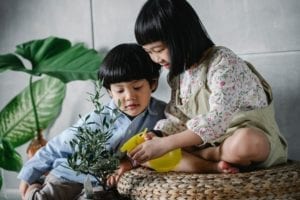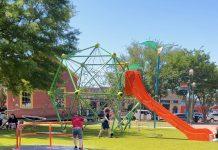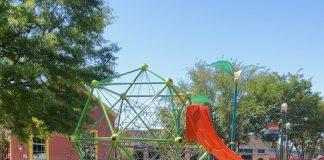The most-watched TED talk ever recorded is “Do Schools Kill Creativity?” In this talk, speaker Sir Ken Robinson explains how the current school structure strives to educate children in a very narrow way, focusing, for example on mathematics and the sciences. While children are curious and creative by nature, education, unfortunately, can have a one size fits all strategy, trying to put all children in a box. To be creative, Robinson explains, we must not be afraid of being wrong. Kids are able to do this–there is no fear of being wrong. This is where real creativity and original ideas are born. But instead of encouraging this, our society, culture, and education systems stigmatize mistakes, and this can ultimately lead to killing creativity. In fact, we are educating people out of their creative capacities. Robinson further claims, “All kids have tremendous talents and we squander them, pretty ruthlessly.” This may leave you wondering what is the answer? How can we live in our current culture but still foster creativity in our children? Enter the Montessori method.
If you already started the process of looking where to enroll your child for school, you’ve probably heard of the weird “M” word. Although Lafayette only has two schools that have named themselves for this method, it is a philosophy that has taken the education world by storm and leaves parents wondering if this is something to consider for their own child. I personally have become invested in my research as I too am considering sending my daughter to one when she is of age. With most things, there are challenges and strengths to choosing this system. I hope to provide more insight to this choice and to help you decide if this is the right fit for your child.
What is Montessori?
This education strategy was developed by Maria Montessori, an Italian physician in the early 1900s. She notably studied children who were institutionalized and started to discover how they needed more stimulation from their environment. Maria’s work and study grew until it was developed in what we think of as the Montessori model today. Simply put, it is an educational environment, carefully crafted, where independence is encouraged. Children choose what to discover and learn, and teachers are there to guide instead of telling them what to learn. This method is said to harness the creativity that is normally killed in a traditional classroom, and they see this instruction most successful in the pre-school ages, 3-6 years old, although there are still schools that will teach this method up until age 18. One aspect that Maria Montessori taught is that children under six would naturally pick activities that would lead them to optimal development. Many classrooms are mixed, that is, children will be with other children of different ages. This also helps their education and development as the younger children are often inspired by the older children, and wish to discover or imitate the things they are learning too.
Why should I choose a Montessori school?
 Parents may decide to pursue this type of curriculum for a number of reasons. Perhaps their child is more independent and reacts well to guiding their own learning through their natural curiosity. Some parents may be concerned about the strict structure of a traditional classroom, and as Robinson’s Ted Talk reiterates, may be concerned about a curriculum that doesn’t foster creativity and instead inhibits it.
Parents may decide to pursue this type of curriculum for a number of reasons. Perhaps their child is more independent and reacts well to guiding their own learning through their natural curiosity. Some parents may be concerned about the strict structure of a traditional classroom, and as Robinson’s Ted Talk reiterates, may be concerned about a curriculum that doesn’t foster creativity and instead inhibits it.
One critique that most traditional schools face is they are so focused on advancing academic achievement and good grades, playtime is sacrificed. As most child psychologists will attest to, playtime is where children flourish and where education truly blooms. A great example of this is that Maria Montessori advocated for discovery and play in nature–she noticed children were so interested in animals, soil, rocks, plants, etc. In today’s age, many teachers must sacrifice playtime in nature. A Montessori school will instead make sure to foster this type of learning. For instance, some Montessori schools will engage and involve young students in starting a garden and tending to one.
With that said, this type of learning is not for everyone. There are some kids who may not flourish with this type of learning and may be better suited for a traditional environment.
Where can my child go to a Montessori school in Lafayette?
There are two schools currently in Lafayette called Montessori of Acadiana and Ashton Grace Montessori School. If you are curious about learning more, school tours, or finding out if this is the right fit for your child, I encourage you to reach out to one of these schools. There is also a great Daily Advertiser article on both schools found here. Whether you decide to enroll in a Montessori school or not, it is a great philosophy to understand and implement in other ways for your child that will help them learn and grow.
Montessori in Action
A few weeks ago, my daughter was playing outside with me and my in-laws. Lo and behold, she saw a bug for the first time. She promptly freaked out. Not in disgust, but in actual amazement. This consisted of a lot of finger-pointing, falling on hands and knees to get up and closer, and personal to this poor unassuming bug. The longer we stayed in the yard, the more she marveled over this creation and tried to find more creatures. Her creativity was in full force, her face bright with questioning and awe. I can’t help but think of this moment when I study the Montessori method. We still have some time before we will need to decide if she will attend this school, but my child has convinced me that her curious play harnesses her creativity, and it makes sense why some children would thrive in this environment.

















